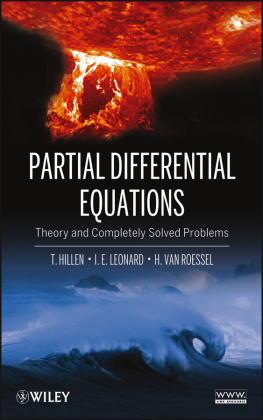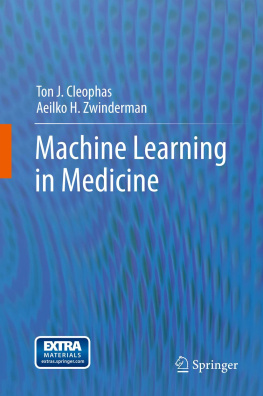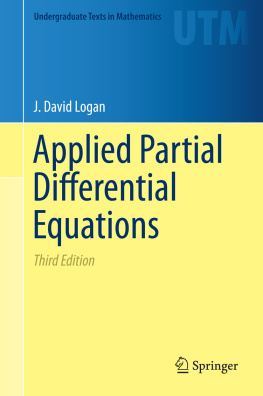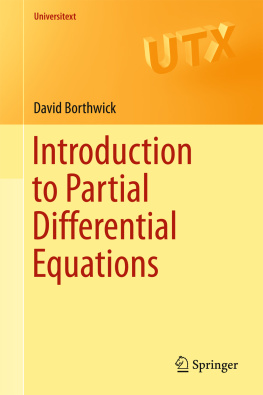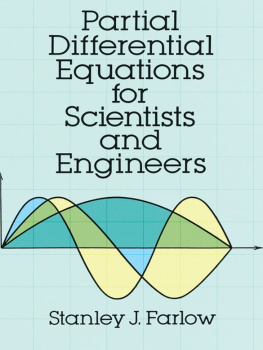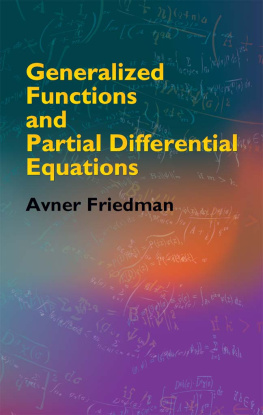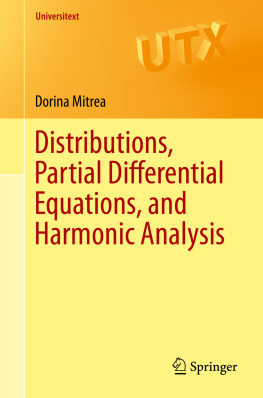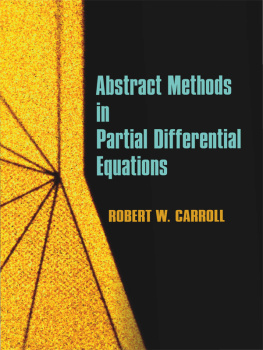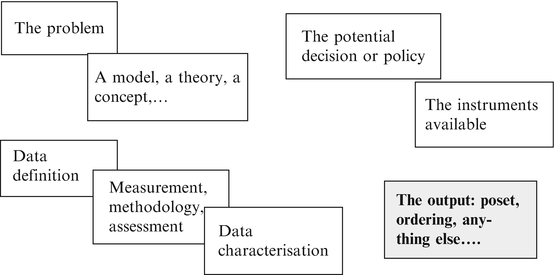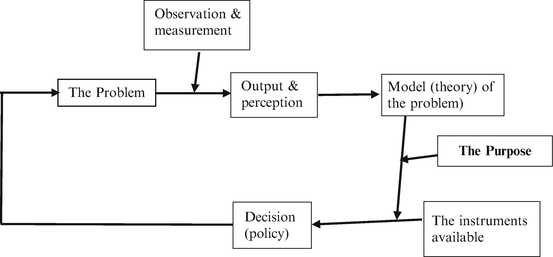On the other hand, though, there are quite obvious, and, at that, quite numerous and diverse, reasons for insisting on complementing the posets to completeness, or at least somehow transforming it in a definite direction and manner. These result from the considerations, associated with the aspects, roughly illustrated in Fig..
Fig. 1
The environment of the studies, leading to data structures, including posets
3.1 The Purpose and the Utility
First is the sheer utility: it may be so that the very objective of the endeavour, from which the data originate, includes the determination of a (possibly) complete order, for quite practical purposes. Lack of such a structure may mean a failure and a loss in economic or social terms.
This argument involves a much broader background, involving such notions as: a problem , an image (model, theory, perception) of the problem , the need to deal with it (to resolve it) , the need to cognise it (to identify its structure and mechanism) , the need to apply definite means to resolve the problem , based on the cognition of the problem, on the purpose (the objective ), and the instruments we operate. All these enter the classical decision-making loop of Fig..
Fig. 2
The classical decision-making loop, in which the notions referred to appear
If our purpose does not involve (imply) a decision or a policy, an action regarding the problem, then our cognition may be the last step in the procedure, and we might not need anything more than a poset, in case we compare some objects or states, and especially then, when not so much the values x ik are important, as sheer binary relations between them.
This last remark is quite telling. A simplest pertinent situation is outlined in the frame of Example 1 (which will be continued further on, through addition of consecutive aspects).
So, if there is a purpose, requiring action, based on a decision or policy, not only ordering may be required, but also measurement of quantities x i and their transformations (mappings). An illustration of the exposure to a situation with an explicit structure of purpose and instruments is provided below, with a hint to an important proposition.
Assume we deal with two dimensions of wealth: k =1income, and k =2usable wealth, meaning lump assessment of the value of assets, considering mainly their utility and only secondarily their market value (e.g. a car as a transport means, not as a certain saleable good; ownership of a dwelling with its equipment being the primary instance). Even though there is a high correlation between the two dimensions, there are numerous cases when households with lower incomes dispose of an ampler usable wealth. This is especially important when such situations occur close to the border of the derived deprivation function, D (.), namely near D ( x )=0, whether we speak of x .1 or of x .2. If the authorities dispose of only one instrument, the general subsidy , then a single reaction (decision) function S ( D 1, D 2) has to be developed, meaning, in fact, appropriate weighing (implicit or explicit) of the two dimensions. Now, assume that the authorities can deploy a second instrument, say, a non-transferable allowance for housing costs . We deal with S 1( D 1, D 2), S 2( D 1, D 2). The fundamental question is: how are the two pairs of dimensions interrelated? Most conveniently, the dimensions k would correspond directly to the instruments. If such a correspondence existed, even in the form of a demonstrable correlation, then the task of the authorities would be straightforward, and no additional analysis, beyond (two) unidimensional rankings, would be necessary.




